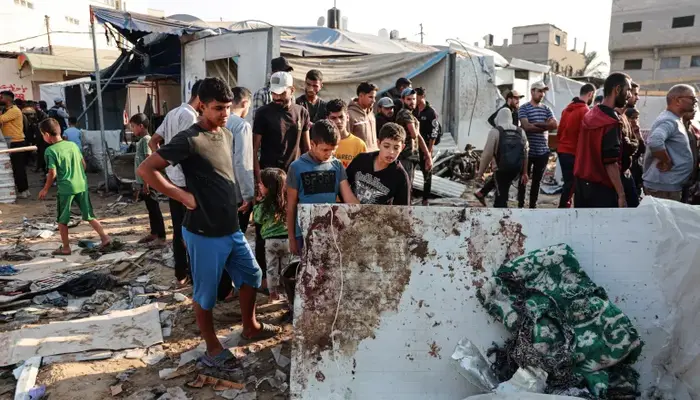In the latest escalation of violence in Gaza, Israeli attacks have killed at least 40 Palestinians, intensifying the crisis in the besieged northern part of the enclave. Despite these assaults, only minimal aid has reached Gaza’s residents, leaving many in urgent need. With the majority of casualties being civilians, including journalists and children, the situation remains dire for those living in this conflict zone.
Civilian Casualties and Targeted Strikes
On Friday, the Palestinian Wafa news agency reported that Israeli strikes claimed over 40 lives across Gaza. In northern Gaza alone, 24 individuals died due to targeted strikes. Saturday brought further tragedy as an air raid hit Fahd al-Sabah school in the Tuffah neighborhood, a facility sheltering displaced residents. Among those killed were local journalists, a pregnant woman, and a child. The Israeli military cited “terrorist targets” as justification but provided no concrete evidence.
Read: UN Human Rights Chief Volker Turk Condemns Israel’s Actions in Gaza
The Shujayea and Zeitoun neighborhoods of Gaza City also came under fire, with five residents killed in Shujayea and another casualty reported due to Israeli sniper fire in Zeitoun. Meanwhile, in Khan Younis in southern Gaza, a “humanitarian area” housing displaced people also faced bombings, killing nine, including a child and two women.
Medical Facilities Under Attack
Gaza’s central healthcare facility, Al-Aqsa Martyrs Hospital, suffered its eighth strike since March. The latest attack, involving an Israeli helicopter strike on the hospital’s courtyard, left three dead and 26 injured. Al Jazeera’s correspondent Maram Humaid reported the explosion happened just 20 meters from her tent, reflecting the frequent targeting of critical facilities in the area. With limited healthcare capacity, this assault places even more strain on Gaza’s beleaguered medical system.
High Civilian Toll and Rising Death Counts
As the war enters its 400th day, Gaza’s Ministry of Health reports that 43,552 Palestinians have been killed, with injuries surpassing 100,000. The number of dead is likely much higher, with an estimated 10,000 bodies buried beneath the vast rubble scattered across Gaza’s devastated urban landscape. The United Nations Human Rights Office has condemned the high civilian death toll, noting that nearly 70 percent of those killed are children and women.
Displacement and Humanitarian Crisis
The humanitarian crisis in Gaza worsens as most of the area’s infrastructure lies in ruins. Over 86,000 tonnes of explosives have devastated the region, displacing nearly two million people, or approximately 90 percent of Gaza’s population. Health services have also been gravely affected, with more than 1,000 health workers killed and thousands of students losing their lives.
Limited Aid Reaches Northern Gaza
For the first time in over a month, the Israeli Coordination of Government Activities in the Territories (COGAT) allowed a small amount of aid to enter northern Gaza, where a major Israeli ground offensive is ongoing. Eleven trucks carrying essential supplies, such as food, water, and medical resources, were permitted to reach distribution centers in Jabalia and Beit Hanoon. However, the United Nations’ World Food Programme (WFP), involved in the relief efforts, reported that not all aid reached the intended locations. Israeli soldiers reportedly offloaded one truck designated for Jabalia before it reached its drop-off point.
Uncertain Future Amid Ongoing Conflict
With limited aid reaching the most affected areas and airstrikes continuing, Gaza’s residents face a bleak outlook. Civilian casualties, hospital attacks, and the restriction of humanitarian aid raise urgent questions about the protection of non-combatants. As the situation deteriorates, the humanitarian toll grows, highlighting the need for international attention and intervention.
Follow us on Google News, Instagram, YouTube, Facebook,Whats App, and TikTok for latest updates
